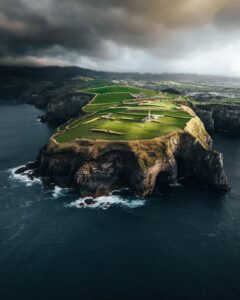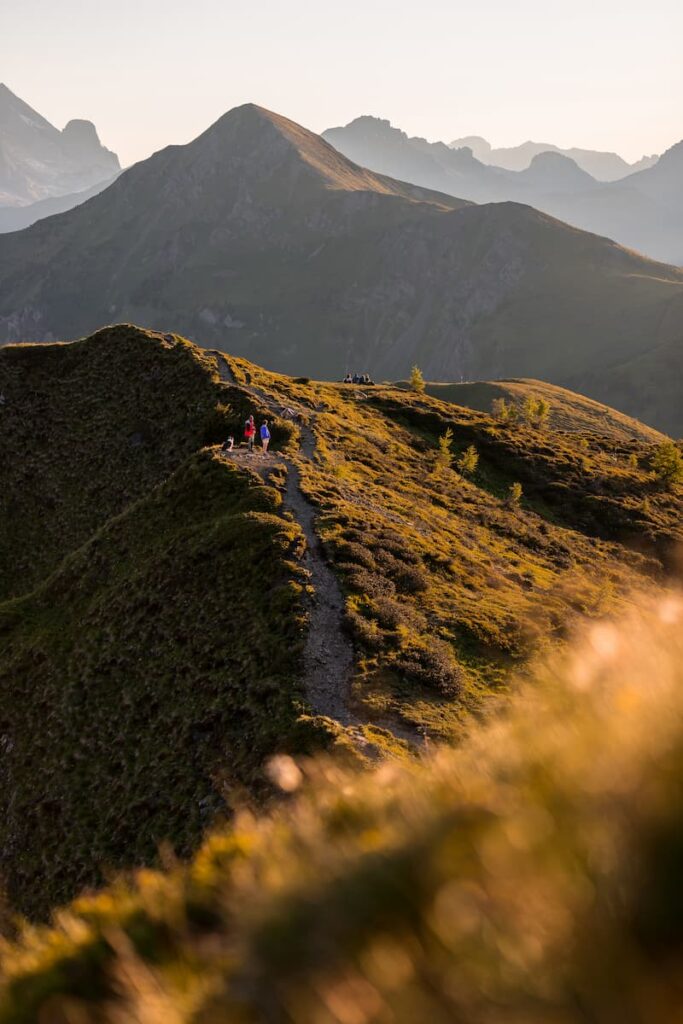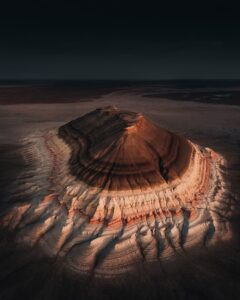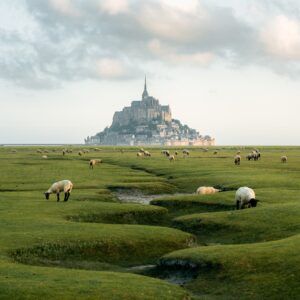
Photo tour in Azores, Portugal
Join us in the Azores for a unique photo tour, where you’ll elevate your creative skills with expert guidance from Ronald Soethje, Bruno Ázera, and Nomadict.
Mattia shares his experiences of exploring and capturing the beauty of Italy’s landscapes, particularly the Dolomites, and his approach to photography as a means of storytelling and fostering a connection between people and nature.
Since I was a child, photography has always played an important role in my life, the credit for this goes to my father, he was a photo amateur (as well as my grandfather) and always wanted to take pictures of our family life, our vacations, and our travels. I remember very well that while he was shooting with his Olympus Reflex camera while I was having fun playing with the Polaroid camera available to the whole family, the legendary SX-70. Perhaps because of this, photography never represented a job for me. Growing up it was part of my everyday life and it was important to us because it could freeze memorable and unrepeatable moments in time.
I received several cameras as gifts over the years as I got older, and it always remained just a passion. Reporting the trips I started to do was a natural thing to do; moving around and seeing new places pushed me to expand my point of view, and my eye noticed new details, new colors, and new lights that I wanted to remember. One of my first major trips was a study vacation to England; I had just started high school, and I returned home with 400 photos. They seem few today but at that time there were still film rolls and to have hundreds of negatives developed was very expensive. I only thought about immortalizing the emotions I was feeling on the trip, no matter the technique – I wanted to take home all those memories, from English breakfast to group photos with friends.
It was the first holidays in the mountains that made me realize that photography could become something more than a passion; representing the beauty of the Dolomites without real technical skills proved more difficult than expected, and it got clear to me that it was time to study a little about photography. I must admit that Instagram also played an important role in this evolution because it put me in touch with other passionate and creative people which fed my strong interest in improving by constantly offering me moments of comparison and stimulation.
The first lesson I learned from talking with my colleagues (photographers, videomakers but also writers) is that if you want to make photographs that tell a story and excite, you should not focus on photography. Let me explain: in your photographs, you bring back everything you have seen, read, studied, and experienced, and every book, movie, song, or painting you have come across in your life has an impact on your photographic style. That is why it is essential to spend so much time observing the work of others, leafing through books and magazines, studying film shots, and going to visit art museums. Cultivating your own image culture is essential!
The second lesson? Definitely that we need to go back to printing pictures! We hardly do it anymore but it is an essential step both for having tangible memories of one’s life and work and for one’s personal growth. Printing photos allows us to look at them more carefully, notice details that we often don’t see on digital screens, and this leads us to improve.
Lesson three: for an outdoor photo shoot or trip it is right for you to prepare, do research, study locations and times of best light, but be prepared to blow it. Being prepared is helpful, but in the outdoors and on a trip, you should not obsess over set goals, you risk missing out on the details or unique opportunities that individual experience has to offer you. One has to be able to adapt to the story in front of you.
A final lesson, which I am still learning though, is that one should not let oneself be immobilized by the fear of making a mistake! One wrong shot does not make you a bad photographer, experience comes from practice, and making mistakes during practice is inevitable – it is healthy! We remember great photographers for a few dozen extraordinary photographs, but behind that small number of photographs there are probably thousands of mediocre or failed shots, and that is normal: making mistakes is an essential part of the creative process.
Living in Italy, I’ve come to realize the lessons above while exploring Italian territory. I know I am being subjective when saying that Italy is gorgeous wherever you are and offers photographic spots for lovers of all kinds of photography – but I do believe it is true for many. I can suggest some spots for mountain and forest lovers:
In my country, some of the most beautiful and silent forests are within the extraordinary Casentino Forest National Park in Tuscany, in the Tuscan-Romagna Apennines along the border with the Emilia-Romagna region. And one of the most unique lakes I have ever seen is Lake Sorapis, in the Veneto region whose Dolomites are somewhat less famous than the mountains of Trentino – Alto Adige. Finally and certainly, the very famous Seceda mountain in the Dolomites of Val Gardena in South Tyrol is one of the most scenic.
One of the other places I found stunning in the Dolomites is Passo Giau, it is well-known among photographers because it is easily reached and offers incredible views (see image below). Although I always try to do the necessary research during planning I have to be honest, there is nothing better than an on-site physical inspection; you live the place firsthand, you observe the changes in light, the shadows, you even enjoy the scents. The mind has time to prepare itself to build the best possible story.
When I took this photograph, it was not the first time that I went to the Giau Pass, and this allowed me not only to catch the hour with the best light but also to know what would be the most suitable day. But I will never stop repeating, in addition to planning and knowledge of the location you need a lot of luck, especially in outdoor photography where there are so many variables out of our control.
In this case, I was very lucky, I managed to capture one of those moments that I love the most, where the special bond that can be established with natural environments is highlighted and the need to protect and preserve these territories if we want future generations to enjoy such beauty as well.

As I continue talking and thinking about Italy and the Dolomites, I can keep coming up with so many other spots worth visiting. The Catinaccio mountain group in the Dolomites for example. Once I stayed in Vajolet Hut located in the small valley of the same name. Such huts make a great subject for photographs. When I photographed it, I intended to enhance this hut without too much editing which would result in an unrealistic photograph. As you can see in the photos below, I was just a few meters from the hut when I took the image, and I approach the edit as follows:
First of all, I refocused the subject by cropping the image because, in the original shot, I had left too much space around the protagonist of the photo.
Then I tried to brighten the colors and in particular to make the wood tones warmer and the green of the grass more accessible.
After that, I lit the subject so that it stood out more and created a vignette only in the lower part of the image to give more depth to the composition. I wanted to portray a situation of complete immersion in nature and contemplation, to give a sense of isolation but in a positive sense, like in a dream, surrounded by the beauty of the mountains that are there in the background, almost as if to protect the house.
The editing of my images is quite straightforward, and I want to keep it that way. Unlike what is more fashionable on Instagram, I strongly want to preserve a simple style without too many artifacts. Of course, I try to enhance as much as possible what I photograph – I often work on light and especially colors but I never want to create fake images. Nature is simple, and the mountains, although extraordinarily beautiful, are simple, so my images must and want to tell this simplicity.
To be honest, I don’t particularly like nature or landscape photos in the most specific sense of the word. I often take such images but I much prefer to show the mountains as a place to be experienced. Therefore, I try to mostly take reportage images during high-altitude hikes rather than just landscape photographs. To do this, I look for unusual shots, inserting out-of-focus elements that give depth to the image and make the viewer feel immersed in that context. Of course, to pursue my goal, when possible, it is even more important to be able to include one or more people in the image who are immersed in the place, experiencing nature and savoring its beauty.
As, over time, I have realized the extraordinary power of photography in bringing people closer to an ethical narrative and a relationship with natural environments, this is what I try to achieve. Photography can and should be critical support for enhancing territories and telling the story of eco-tourism as a new way of traveling and especially experiences within natural habitats. So, leaving aside the more technical aspects (light, colors, and composition) I believe that what makes a photo great is above all its ability to communicate something to the widest possible number of people. Great images are those that manage to arouse emotions (positive or negative) in many different people in terms of nationality, interests, age, gender, and so on; emotions are universal, and knowing how to turn them on is the task of great photography. This is why I claim that photography can make a difference in environmental conservation; if used consciously, it can bring people closer to nature and become intrinsically motivated to contribute to its protection by creating a universal dialogue based on emotions.
I remember a very special moment in the Italian Alps, where I managed to take a photo that truly illustrates what I aim for with my photography, as explained above. It was dawn, we had just climbed to the top of Alpe Lusia. The mountains turned into beautifully layered shades because of the light and my eye noticed a group of people on the opposite ridge. I took my camera to take a better look and I managed to capture an image that to me, still today, is the perfect representation of the synthesis of outdoor life and its relationship with nature.
From a professional point of view, one of the most important experiences was the photographic narrative of the Tuscan area of Casentino and the Casentino Forest National Park, made for the official tourism portal Visit Tuscany. It was a beautiful but complicated job; creating images in such distant places taught me to improve my organization and planning of the shoots to optimize the realization time and travel expenses.
In addition to this, one of the most recent projects that left me with something special from a personal growth point of view was the photo shoot for the Madonna di Campiglio tourist board in the Dolomites to tell the story of their extraordinary territory during autumn and show its magnificence even outside the time of the most popular season for tourism. Mountain territories are often small, and, it is never easy to be able to provide excellent services when there are too many visitors, which is why it is essential to also introduce people to seasons and times of the year other than the most popular ones to facilitate more regular and more distributed tourism throughout the year.
I would love to be able to do much more for nature and people in terms of conservation and helping individuals improve their connection with nature. In ten years, I would love to look back and have an accomplished creating a photography book that is dedicated to mountains and the connection between humankind and nature. This would be one of the greatest achievements for me. And even though the publishing industry is going through a difficult time in history, I would love to be able to collaborate with magazines and news outlets to produce reports focused on raising awareness of the conservation of natural environments.
Furthermore, looking to the future, I am highly aware that the world of photography is changing dramatically. Social media is leading to a total overlap between photography and videography, causing confusion between these professional figures that are in its core, very different. We will see how this will change the industrie for us in the coming years. To this, we can add the rapid rice of artificial intelligence, which is radically changing the way we approach and conceive creativity and technical skills, especially in the post-processing phase.
I guess everyone has to find their way how to deal with the changes and what is their ultimate goal with their work. Even if photographers have similar goals, these can be approached and achieved in many different ways and that makes that there is so much to learn, explore and create.
Saying this, it reminds me of Croce di Pratomagno, a place a few hours from where I live. It is my go-to spot to enjoy the silence and put my thoughts together. To me, it is a perfect place to reflect, find solutions, visualize new ideas… There is one photo I took here that I am particularly fond of. It shows the silhouette of a crest. It is a simple image but it is very important to me because being able to shoot it was a real stroke of luck – and because it tells of the beauty of a place that is very close to my heart.
We can do our best for client work or during shoots for personal projects, however, very often, the photographs we remember and love the most are related to experiences where we felt deeply touched.

Join us in the Azores for a unique photo tour, where you’ll elevate your creative skills with expert guidance from Ronald Soethje, Bruno Ázera, and Nomadict.

In this article, Forest shares how years of chasing scale, silence, and raw landscapes shaped his approach to photography, from the deserts of Kazakhstan to the volcanic ridges of Iceland. He talks about how he uses light, texture, and vast negative space to create images that feel both intimate and overwhelming.

Simon shares the journey behind his photography, from early inspirations to field techniques, editing, and the story of the winning shot that shaped his path.

In this article, Miro shares how his love for cinematic music evolved into a deep passion for photography and how he uses light, color, and atmosphere to turn the streets of Prague into living film scenes.

In this article, Stefanie reveals how her background in physics sparked her passion for astrophotography and how she blends science with creativity to capture the beauty of the night sky. Readers will discover her approach to color, contrast, and editing, as well as her aurora photography workflow.

Spanish photographer Yhabril captures the profound connection between humans and the mountains that shaped him. Growing up in the Pyrenees, his work bridges outdoor sports, landscapes, and celestial scenes — often blending athletes, moonlight, and wilderness into striking visual stories.

In this article, Ariane shares how photography helped her navigate personal challenges, connect authentically with people and animals, and develop a philosophy rooted in empathy and artistic freedom. Readers will also discover her ethical approach to wildlife photography and her trusted equipment for both camouflage techniques and cameras.

Discover how to photograph Dutch tulip fields in their most magical light. From choosing the right gear and lenses to mastering composition, color, and aerial perspectives, this guide shares creative techniques to capture the beauty of the Netherlands’ tulips. Learn how light, color grading, and proportion bring emotion into every frame.
